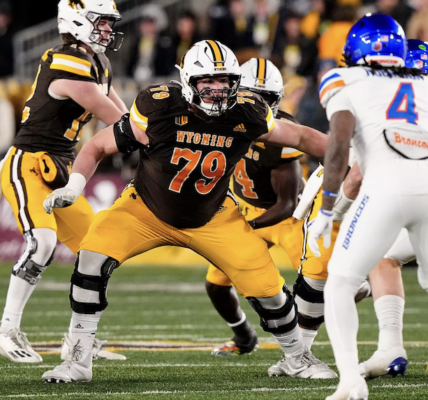
Charley Sutherland
Jackson Hole News&Guide
Via- Wyoming News Exchange
JACKSON – Locals often complain about long lines of cars in the national parks, but the visitors taking their “bucket-list trip” from New York or Texas don’t actually care all that much.
“When they see that bison or they see that grizzly, they’re going to stop,” Yellowstone Superintendent Cam Sholly said, “and they’re having a good time.”
Visitors and locals use the national parks very differently, and questions about who the land is meant to serve guide conversations about visitor management, park leaders said this week. They spoke during the Mountain Towns 2030 Climate Solutions Summit in Jackson about reducing tourism’s environmental impact.
Sholly said he doesn’t agree with the narrative that national parks are being totally overrun by tourists, particularly the actual landscape inside the parks. About 97% of visitors to Yellowstone stay within half a mile of their car, Sholly said.
He said that in one of Yellowstone’s latest surveys, he thought the park was going to get “hosed,” but it didn’t. People saw wildlife they had never seen and towering geysers they can’t see anywhere else and left positive reviews, even if they waited in long lines.
“There’s a payoff for sitting in traffic,” Sholly said, unlike on highways in Washington, D.C., or Los Angeles.
Chip Jenkins, superintendent of Grand Teton National Park, weighed the same distinction between serving visitors and residents. In Grand Teton, unlike in the Bridger-Teton National Forest, Jenkins said, almost 95% of visitors don’t live in the county, yet when the national park does outreach to measure visitor satisfaction, essentially only Teton County residents provide criticism.
Jenkins pointed out some of the basic ironies of over-visitation: People come to Grand Teton in part to see wildlife, but there are so many people lined up in cars to try to spot a moose or elk that they are clogging up the road and animals can’t move around like they normally would.
The moderator asked about placing a hard cap on visitors to Grand Teton.
“You don’t sit there and put two foursomes on the same hole” at golf courses, Jenkins said.
Restaurants, ski resorts and rental car companies all have caps, and eventually Grand Teton National Park will have to put something similar in place, Jenkins said.
But he emphasized that a cap on visitors wouldn’t actually be that new or different. The national park already has caps on how many people can use campgrounds or get backcountry permits, Jenkins said.
John Bowers, who oversees marketing for the Jackson Hole Travel and Tourism Board, said he tries to reach people when they are in the “dreaming and planning” phase of their trip. Once people get here, they can get “Disneyland head,” meaning they forget how to act and do silly things.
But if tourists consume messaging about responsible visitation, things like keeping enough distance from wildlife, they’re more likely to act appropriately, Bowers said.
Sholly brought up shuttle buses, asking the audience, “Who thinks a shuttle system on Yellowstone’s 475 miles of road is a good idea?”
Very few of the climate-minded attendees raised their hands.
A shuttle system would require infrastructure, things like big paved parking lots and garages, Sholly said. People “want to see what they want to see,” he said, and they want to spend different amounts of time at each location. Shuttles might work in parks like Zion, but in Yellowstone, Sholly said it’d be difficult.
It’s easy, Jenkins said, for people to say others should use a shuttle bus so there’s more room on the road for themselves.
Jenkins said he tries to encourage “stewardship” when he talks with visitors to Grand Teton. By emphasizing the values associated with conservation and preservation, visitors will get on board with the message, he said.
By shifting messaging and encouraging stewardship, Jenkins thinks the national park can get the general public on board with a shared value set that cherishes and respects wild landscapes and animals.
“We need wild spaces and we need these iconic animals,” Jenkins said. We need this landscape that “feeds our soul.”
Bridger-Teton National Forest supervisor Chad Hudson was also slated to speak but was called upon to aid in fighting the Pack Trail Fire, which provided a smoky setting for the climate conference.





